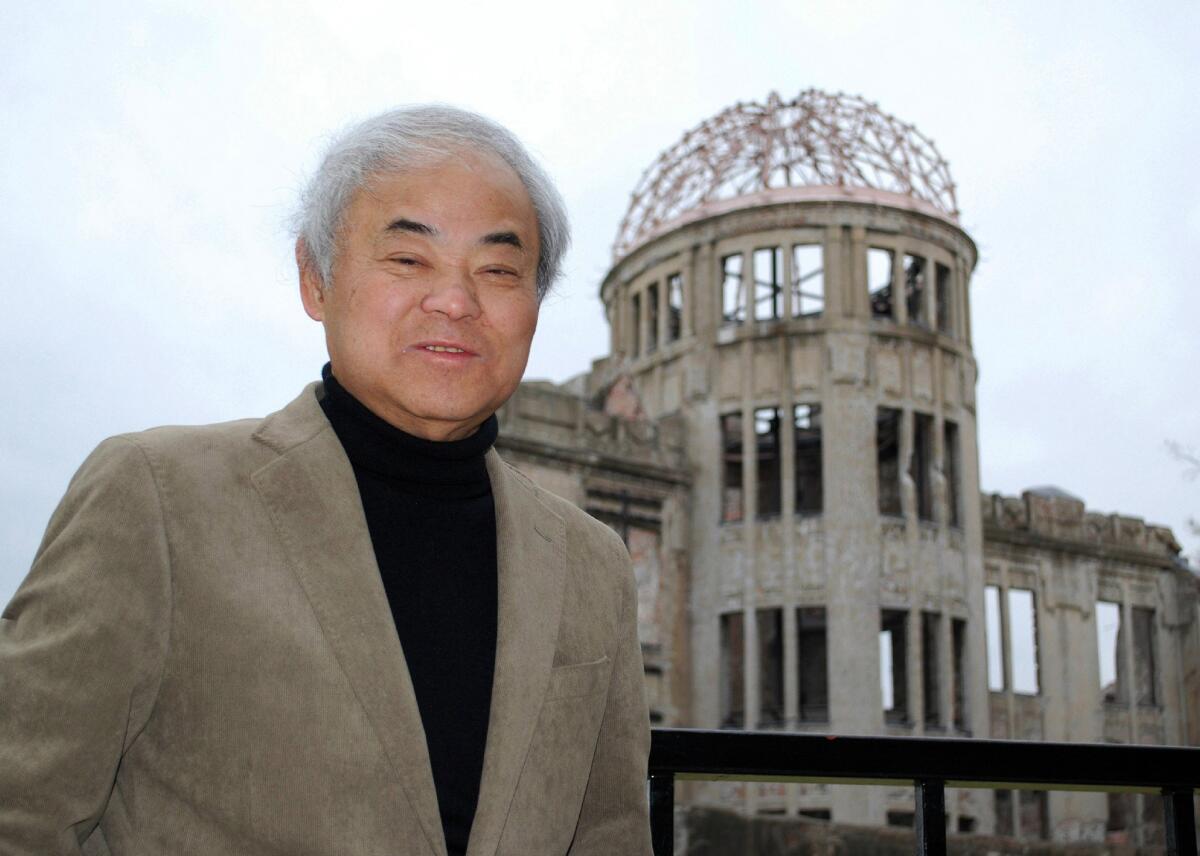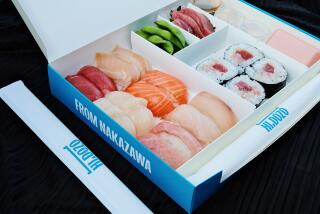Keiji Nakazawa dies at 73; Japanese artist of comic ‘Barefoot Gen’

Images of a city smoldering and a river clogged with pale, radioactive cadavers never left Keiji Nakazawa’s mind.
The Japanese manga, or comic-book, artist used those images and other memories of surviving the atomic bombing of Hiroshima, to create “Barefoot Gen,” a gruesome, yet hope-driven comic about a boy, who like Nakazawa, survived the Aug. 6, 1945, attack.
Nakazawa was a first-grader standing outside of his school when the United States dropped the bomb that killed more than 100,000 people, including his father, brother and a sister. He survived, as did his mother, but radiation sent her into premature labor. His newborn sister died days after the bombings at Hiroshima and Nagasaki that effectively ended World War II.
Nakazawa, who since the 1970s had used “Barefoot Gen” to make a case against nuclear proliferation, died Dec. 19 of lung cancer at a hospital in Hiroshima, according to Japanese news reports. He was 73.
“It touched nerves on both sides of the Pacific,” animation critic and historian Charles Solomon said of “Barefoot Gen.” “Not only for its subject matter, but for the idea that a comic book could present this type of material and present it very powerfully.”
“I wanted to put down on paper the scenes engraved in my mind,” Nakazawa told Tokyo’s Daily Yomiuri newspaper in 2009. “Everybody says the atomic bomb was terrible, but I wanted to use manga to show people just how terrible it actually was.”
His 10-volume magnum opus, which has been translated into several languages and adapted into films, cast blame for the bombing on both the United States and Japan and alluded to his longing for world peace.
In one scene, the title character Gen, who remains cheerfully optimistic amid his suffering, peers sanguinely at a rainbow arching over the sun. He daydreams of a peaceful world, “where people cross freely over those rainbow bridges and talk to each other as friends.”
Like his comic alter ego, Nakazawa advocated for peace.
At a 2009 party celebrating a complete, revised translation of the manga into English, Nakazawa said: “We’ve translated Gen with the hope that a large number of English speakers will read it. I hope people will realize through Gen that nuclear weapons are folly.”
Born about a mile from Hiroshima’s city center on March 14, 1939, Nakazawa and his mother spent the years after the bombing in poverty. He worked as a sign painter’s apprentice and dreamed of a life as a manga artist.
At 22, he packed up his sketches and moved to Tokyo, where he worked at various magazines. In 1973, at the urging of the editor of the Japanese magazine Boys’ Jump Monthly, he started writing “Barefoot Gen.”
Personally inspired story lines — not meticulous drawings — were the forte of the self-taught artist.
“The art style is very raw,” Andrew Farago, curator of the Cartoon Art Museum in San Francisco, said in an interview with The Times. “His work was a little bit less polished than some of his contemporaries.”
In that way, Farago said, “Barefoot Gen” is reminiscent of the underground comics that flooded the U.S. market in the late 1960s and early 1970s.
What differentiated the manga most, Farago said, was its subject matter.
“Barefoot Gen” painted a painful and true account of suffering during a post-World War II Japan that longed for escapism.
In 1976, when parts of the manga were translated and published in the United States, most readers viewed comics as a way to escape life’s painful aspects, including still-raw memories of war.
“In comics, we expected super heroes or the jokes of the Walt Disney comics,” Solomon said. “And here was someone using a comic book format to tell this very compelling, very personal, very powerful story of suffering, endurance, survival.”
Nakazawa’s other characters also bucked trends.
In “Hiroshima: The Autobiography of Barefoot Gen,” the artist’s 2010 autobiography translated by Richard H. Minear, Nakazawa said he once created a protagonist to contrast the macho male roles he often saw in manga.
“As a counter,” Nakazawa wrote, “I thought, how about a nerdy, weak boy?”
Manga was his platform to challenge the norm and incite change.
“I’m a cartoonist, so cartoons are my only weapon,” he wrote in his autobiography. “Doubt is extremely strong, but we have to feel that change is possible.”
More to Read
Start your day right
Sign up for Essential California for the L.A. Times biggest news, features and recommendations in your inbox six days a week.
You may occasionally receive promotional content from the Los Angeles Times.







